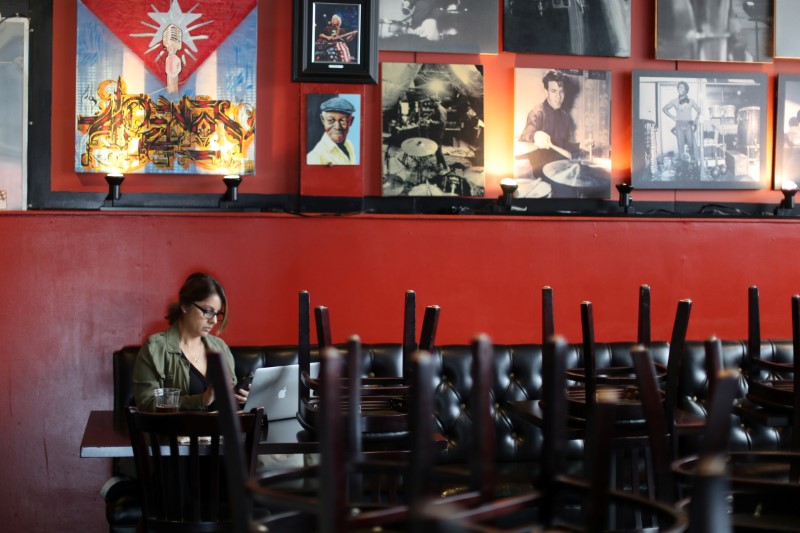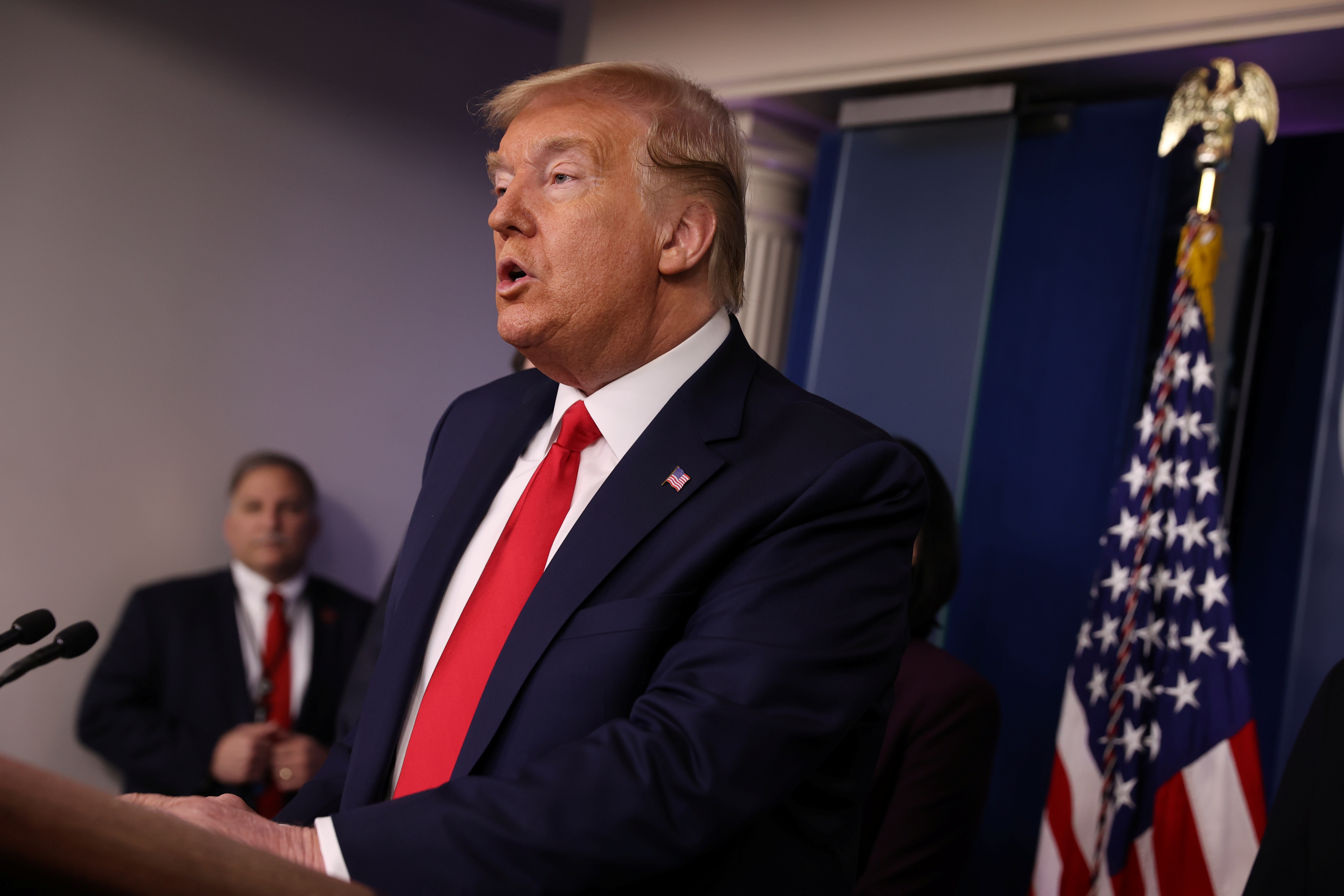
By Lindsay Dunsmuir and Ann Saphir
WASHINGTON/SAN FRANCISCO (Reuters) – On St. Patrick’s Day last year, Amy and Chris Hillyard marked the 30th anniversary of Farley’s, their pair of cafes in San Francisco and Oakland, California, with live bagpipes and noisy crowds.
This year, they spent the day quietly packing up beans, granola, and a vegan coconut curry made from unsold produce to give to the 40 employees they had to lay off on March 16.
In the space of a month, the Hillyards had gone from their strongest financial period, ever, to at least temporarily closing their doors.
“We were running at the top of our game as a business and it’s just devastating to have to turn off the engine,” Amy said.
The rapidly escalating coronavirus outbreak in the United States has begun to decimate the restaurant industry as an increasing number of states and regions enforce population lockdowns and close eateries, bars, gyms and other “non-essential” businesses.
The food service industry is the nation’s second-largest private employer, with 15.6 million employees, according to the National Restaurant Association, which counts 1 million restaurants, including fast food outlets, in the United States.
Of these, 90% are small businesses with fewer than 50 employees, NRA says, a figure that includes franchised chain stores, which are usually independently owned.
Restaurants are notoriously high-risk businesses, typically running on pretax margins of 3 to 6%, which makes them extremely vulnerable in a downturn.
The trade group estimates U.S. restaurants could take a sales hit of up to $225 billion in the next three months, a quarter of the $899 billion in sales that they had expected for the full year.
Approximately 6.7 million people in the San Francisco Bay Area, a coronavirus hotspot, have been ordered since Tuesday to stay home until April 7 except for essential outings. This type of lockdown is set to become more widespread as cases of the virus rise elsewhere.
On the U.S. East Coast, New Jersey, New York and Connecticut struck a regional agreement on Monday to close all movie theaters, casinos and gyms. New York City may soon also issue a “shelter in place” order. Restaurants and bars in the three states – where about 32 million people live – will serve takeout and delivery only.
For the Hillyards, switching to takeout or delivery was not a viable option, given the cafe is surrounded by now-empty office buildings. By Monday, sales were down 70% from normal, as local businesses sent workers home even before the lockdown started.
Their immediate concern is how to pay their bills. The next payment for the staff’s health insurance plan is due on March 25. Rent, their other big monthly cost, is due on April 1 – but so is a loan payment to Bank of America <BAC.N>, and they cannot make both.
OUT ON A LIMB
In Washington state, another virus hotspot, restaurants were also closed to all but takeout and delivery earlier this week. Fon Spaulding, who runs Kati Vegan Thai in Seattle, has seen sales fall almost 80% – the same proportion of her customers that worked at the nearby headquarters of Amazon.com Inc <AMZN.O>, until they were told to work from home.
The city government has said it will spend $1.5 million on grants for small businesses affected by the coronavirus, but that will not help Spaulding.
“It is for people who don’t have more than five employees. Our restaurant couldn’t get it,” Spaulding said. She also remains confused about what she qualifies for or how to get it. “We have heard about many, many loans … but we don’t know exactly where to start to apply.”
DELIVERY IS NOT ENOUGH
Restaurant visits as measured by OpenTable were down 77% year-on-year on March 16 in Washington, D.C., after the city told restaurants and bars to stop serving customers on the premises, to reduce the public’s potential exposure to the virus.
There as elsewhere the hope is that the rise of online food ordering over recent years will soften the blow.
Meals ordered digitally for delivery were up 16% in 2019 from the year before, while digital orders for takeout increased 33%, data analytics firm NPD Group said.
But delivery is a tiny slice of restaurant sales in normal times, at roughly 3% of orders.
Ris Lacoste has owned Ris, a fine dining restaurant in the heart of downtown Washington, D.C., for 10 years. Diners are used to feasting on mussels as they sip their wine. Delivery and catering usually make up 5% of sales at most.
She has been forced to let go of almost all her 50-odd staff. For now it is just her, a front-of-house manager and a chef. On Wednesday, they began serving a limited takeout menu, offering soup, salad, pot pies and bread.
Lacoste said she cannot offer more choices without knowing how popular they will be, because she cannot yet afford to buy more product or rehire staff. The uncertainty of whether the restaurant will be closed to in-house dining for two weeks or two months also makes it difficult to plan.
“We are figuring out daily costs to keep the lights on,” she said. “Selling to-go is great and it might keep some places alive, but it won’t keep all of us alive.”
The Hillyards are still hoping they will be able to reopen instead of shuttering for good. Instead of loans, which have to be repaid and will never cover the custom they have permanently lost, they would like more direct help from local and federal government.
“We need a bailout,” Amy said, sitting with Chris in the sunny window of the empty cafe. “Why should banks and the cruise industry get a bailout when we are the lifeblood, and the heartbeat, of the community?”
(Reporting by Lindsay Dunsmuir in Washington and Ann Saphir in San Francisco; Editing by Heather Timmons and Matthew Lewis)











